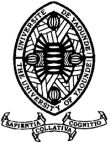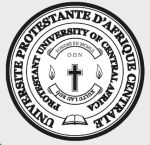Association of TA Repeat Polymorphism of Steroid 5-Alpha-Reductase Type 2 Gene with Prostate Cancer in a Beninese Population
Association du Polymorphisme Répété TA du Gène de la Stéroïde 5-Alpha-Réductase de Type 2 Avec le Cancer de la Prostate dans une Population Béninoise
DOI:
https://doi.org/10.5281/hra.v2i12.6224Abstract
ABSTRACT
Introduction. Genetic variants of 5-alpha-reductase type 2 (SRD5A2) have been associated with high-risk factors for prostate cancer (PCa). The purpose of this study was to determine the association between the SRD5A2 gene AT repeat polymorphism and total prostate-specific antigen (TPSA) level on one hand, and PCa grade on the other. Materials and Methods. This was a descriptive and analytical cross-sectional study conducted from January 2018 to September 2022 at the CNHU-HKM Urology-Andrology University Clinic. TPSA levels were determined by radioimmunoassay. PCa Gleason scores and ISUP 2016 classification were defined by pathological examination of biopsies. PCR was used to determine the different genotypes of the SRD5A2 gene AT repeat polymorphism. The association between genotypes and clinical data was studied using the proportion and Student's t-tests. Results. The inclusion criteria were met by 140 cancer patients. The average age was 59.62 years, with 9.16 years as a standard deviation. The TPSA levels averaged 104.87 ng/ml, with 160.96 ng/ml as a standard deviation. Histologically, 58.57% of cases had a Gleason score ≥ 8, with 50.71% classified as ISUP 4 and 7.86% as ISUP 5. In the study population, the genotypes SRD5A2-L/SRD5A2-L and SRD5A2-L/SRD5A2-S were respectively 58.57% and 41.43%. Statistical analyses revealed highly significant differences between SRD5A2 genotypes when considering respectively TPSA levels and the ISUP 2016 groups. Conclusion. Very high levels of TPSA and a high-risk of PCa were associated with the SRD5A2-L/SRD5A2-L genotype. It has the potential to be used as a genetic marker for screening and early diagnosis of PCa.
RÉSUMÉ
Introduction. Le gène de la 5-alpha-réductase de type 2 (SRD5A2) était reconnu comme un gène qui prédisposait au cancer de la prostate (CaP). Notre objectif était de déterminer l'association entre le polymorphisme AT répété de ce gène, le taux de l’antigène spécifique de la prostate total (PSA-T) et le grade du CaP. Méthodes. Il s'agissait d'une étude transversale descriptive et analytique menée de janvier 2018 à septembre 2022 à la clinique universitaire d'urologie-andrologie du CNHU-HKM. Les taux de PSA-T étaient déterminés par le dosage radio-immunologique. Les scores de Gleason du CaP et la classification ISUP 2016 étaient définis par l’examen anatomopathologique des biopsies. Les génotypes (AT)n du gène SRD5A2 étaient déterminés par la technique de PCR. L’association entre les données génétiques et cliniques était étudiée grâce au test de proportions et au test de Student. Résultats. 140 cas de CaP ont répondu aux critères d’inclusion. L’âge moyen était de 59,62 ans. Le taux moyen de PSA-T était de 104,87 ng/ml. 58,57 % des cas avaient un score de Gleason ≥ 8 avec 50,71% classé ISUP 4 et 7,86% classé ISUP 5. Les génotypes SRD5A2-L/SRD5A2-L et SRD5A2-L/SRD5A2-S représentaient respectivement 58,57 % et 41,43 %. Il y avait des différences hautement significatives entre les génotypes SRD5A2, les taux de PSA-T et les groupes ISUP 2016. Conclusion. Des niveaux très élevés de PSA-T et un risque élevé de CaP sont associés au génotype SRD5A2-L/SRD5A2-L. Il pourrait être utilisé comme un marqueur génétique de dépistage et de diagnostic précoce du CaP.
References
Adeloye D, Rotimi AD, Adewale VA, Alexander I, Ayo O, Emeka EJI, Nicholas O, Charles KA. (2016) An Estimate of the Incidence of Prostate Cancer in Africa: A Systematic Review and Meta-Analysis. PLOS One, 11(4), e0153496.
Davis DL, Russell DW. (1993) Unusual length polymorphism in human steroid 5-alpha-reductase type 22 gene (SRD5A2). Hum. Mol. Genet., 2, 820.
Reichardt JKV, Makridakis N, Henderson BE, Yu MC, Pike MC, Ross RK. (1995) Genetic variability of the human SRD5A2 gene implication for prostate cancer risk. Cancer Res., 55, 3973-3975.
4. Ouattara A, Hodonou R, Avakoudjo J, Cisse D, Zango B, Gandaho I, Hodonou FDJM, Yevi M, Vodonou A, Hounnasso PP et al. (2012) Épidémiologie des cancers urologiques au Centre National Hospitalier Universitaire Hubert Koutoukou Maga Cotonou Bénin. Analyse d’une série hospitalière de 158 cas. Prog Urol, 22, 261-5.
Segbo JAG, Tapara SDM, Houngnonvi C, Missihoun AA, Sedah P, Agbangla C. (2016) Paraoxonase 3 gène ala99ala polymorphism distribution in Beninese three ethnic populations. Int. J. Curr. Res., 8(09), 38892-38895.
Veronique-Baudin J, Dieye M, Kouyoumdjian JC, Vacheron F, Draganescu C, Azaloux H. (2006) Etude cas-témoins des gènes des récepteurs des androgènes, de la vitamine-D et de la 5-alpharéductase dans une population afro-antillaise de cancer de prostate. Prog Urol, 16, 303-310.
Central Intelligence Agency (.gov). (August 20, 2024) The World Factbook-Benin: Demographic profile. https://www.cia.gov/the-world-factbook/countries/benin/.
Rebbek TR, Zeigler-Johnson CM, Heyns CF, Gueye SM. (2011) Prostate cancer screening, detection, and treatment practices, among sub-Saharan African urologists. Afr. J. Urol., 17, 85-91.
Jeanteur P. (2008) La prédisposition génétique du cancer de la prostate. Bull Cancer, 95(11),1063-6.
Seidou F, Akpo W, Flenon A, Bara OAJ, Akele-Akpo MT. (2019) Aspects histologiques des biopsies prostatiques à Cotonou. J. Soc. Biol. Clin. Bénin, 31, 28-31.
Ludovic NBP, Sory D, Addé OB, Christian NT, Yvon KKK, Gaetan KZA, Moctar T. (2021) Cancer de la prostate chez le sujet de race noire en Côte d'Ivoire / Prostate cancer in the black subject in Côte d'Ivoire. Rev. int. sci. méd. Abj., 23 (1), 49-54.
Mahamat AM, Jalloh M, Ndoye M, Hounnasso CH, Faye ST, Mbodj M, Niang L, Labou I, Gueye SM. (2016) Report of Radical Prostatectomy at the Urology Department of the Hopital General de Grand Yoff (HOGGY). Int. J. Nephrol., 4, 15-20.
Ikuerowo SO, Doherty AF, Bioku MJ, Abolarinwa AA, Adebayo AA, Oyeleke SO, Omisanjo OA. (2016) Outcome of radical retropubic prostatectomy at the Lagos State University Teaching Hospital. Niger Med J., 57(4), 238-41.
Niang L, Ndoye M, Ouattara A, Jalloh M, Labou M, Thiam I, Kouka SC, Diaw JJ, Gueye SM. (2013) Cancer de la prostate: quelle prise en charge au Sénégal? Prog Urol, 23(1),36- 41.
Ravery V, Javerliat I, Toublanc M, Boccon-Gibod L, Delmas V, Boccon-Gibod L. (2000) Caractéristiques des cancers prostatiques chez les français d’origine afro-antillaise. Prog Urol. 10, 231-236.
Paule B, Cicco A. (2001) Les biphosphonates dans le traitement des métastases osseuses du cancer de la prostate. Prog Urol, 11,1205-12.
Yevi DMI, Ngaguene J, Sossa J, Mbadinga-Nzamba G, Hodonou F, Avakoudjo JDG. (2021) Résultats des biopsies prostatiques échoguidees : à propos de 87 cas colliges au CNHU-HKM de Cotonou. J. Soc. Biol. Clin. Bénin, 036,74-79.
Amégbor K, Yao ST, Tengué K, Songne-Gnamkoulamba B, Napo-Koura G, James K. (2009) Épidémiologie et histopronostic du cancer de la prostate au Togo : à propos de 202 cas diagnostiqués au laboratoire d’anatomie pathologique du CHU Tokoin de Lomé. Prog Urol, 19,112-5.
Cisse D, Bangoura MF, Bah MB, Barry MI, Diallo TM, Amougou B, Diallo A, Bah MD, Kante D, Barry AO et al. (2022) Prise en Charge du Cancer Avancé de la Prostate à l’Hôpital National Ignace Deen de Conakry. Health Sci. Dis., 23, 90-94.
Troh E, N’Dah KJ, Doukouré B, Kouamé B, Koffi KE., Aman NA. (2014) La prostate en Côte-d’Ivoire : aspects épidémiologiques, cliniques et anatomopathologiques. J. Afr. Cancer., 6,202-208.
Halidou M, Kodo A, Diongolé H, Zakou ARH, Magagi I, Amadou S. (2022) Le Cancer de la Prostate au Niger: Aspects Épidémiologiques Cliniques et Histologiques à l’Hôpital National de Zinder. Health Sci. Dis., 23, 113-116.
Rajender S, Vijayalakshmi K, Pooja S, Madhavi S, Paul SFD, Vettriselvi V, Shroff S, Singh L, Thangarajet K . (2009) Longer (TA)n repeat but not A49T and V89L polymorphisms in SRD5A2 gene may confer prostate cancer risk in South Indian men. J Androl, 30(6), 703-10.
Tengue K, Kpatcha TM, Botcho G, Leloua E, Amavi AK, Sikpa K, Sewa E, Anoukoum T, Amegbor K, Dosseh E. (2016) Profil épidémiologique, diagnostique, thérapeutique et évolutif du cancer de la prostate au Togo. Afr J Urol, 22,76–82.
Osegbe DN. (1997) Prostate cancer in Nigerians: facts and non facts. J Urol, 157(4),1340-3.
Fofana A, Kouame B, Gowe EE, Kramo NAF, Konan KPG, Moro AC, Dekou A, Ouegnin GA, Manzan K. (2017) Cancer metastasé de la prostate: Aspects socio-économiques, radiologiques et évolutifs en Côte-d’Ivoire. Afr J Urol, 23 (4), 281-285.
Ammani A, Janane A, Chafiki J, Sossa J, Harrech YEl, Moufid K. (2007) Profil épidémiologique du cancer de la prostate dans le service d’urologie de l’hôpital Mohammed V de Rabat.J Maroc Urol, 5,11-14.
Kaboré F, Zango B, Kambou T, Yaméogo C, Kirakoya B. (2013) Cancer de la prostate au Burkina Faso : caractéristiques diagnostiques et indications thérapeutiques initiales. Prog Urol, 23(13), 1075.
Ross RK, Pike MC, Coetzee GA, Reichardt JK, Yu MC, Feigelson H, Stanczyk FZ, Kolonel LN, Henderson BE. (1998) Androgen metabolism and prostate cancer: establishing a model of genetic susceptibility. Cancer Res., 58, 4497-4504.
Ross RK, Bernstein L, Lobo RA, Shimizu H, Stanczyk FZ, Pike MC, Henderson BE. (1992) 5- alpha-reductase activity and risk of prostate cancer among Japanese and US white and black males. Lancet, 339 (8798), 887-9.
Kantoff PW, Febbo PG, Giovannucci E, Krithivas K, Dahl DM, Chang G, Hennekens CH, Brun M, Stampfer MJ. (1997) A polymorphism of the 5 alpha-reductase gene and its association with prostate cancer: a case-control analysis. Cancer Epidemiol Biomarkers Prev., 6(3), 189-92.
Downloads
Published
How to Cite
Issue
Section
License
Copyright (c) 2024 Agoh B. Johanes, Segbo A.G. Julien, Yevi D.I. Magloire, Missihoun A Abel, Agounkpe M. Michel, Sedah Paulin, Houndetoungan G David, Avakoudjo D G Josué, Loko Frédéric, Gangbo Flore, Akele Marie -Thérèse, Amoussou-Guenou K Marcellin, Agbangla Clément

This work is licensed under a Creative Commons Attribution-NoDerivatives 4.0 International License.
Authors who publish with this journal agree to the following terms:
- Authors retain copyright and grant the journal right of first publication with the work simultaneously licensed under a Creative Commons Attribution License CC BY-NC-ND 4.0 that allows others to share the work with an acknowledgement of the work's authorship and initial publication in this journal.
- Authors are able to enter into separate, additional contractual arrangements for the non-exclusive distribution of the journal's published version of the work (e.g., post it to an institutional repository or publish it in a book), with an acknowledgement of its initial publication in this journal.
- Authors are permitted and encouraged to post their work online (e.g., in institutional repositories or on their website) prior to and during the submission process, as it can lead to productive exchanges, as well as earlier and greater citation of published work










